Our first outing was so much fun!
Plus it was full of a warmth and camaraderie that made everything work, even if we had a couple of false starts. The whole trip was a re-working of an original plan to go up to a spot near Council, ID where Eve had collected Arnica and Arrowleaf Balsamroot in the past. But the weather was too cold & wet, so we had all decided the 2-hr. trip would be too risky.
There were 11 of us who came to Plan B, including Eve’s husband and two of the cutest granddaughters, and the three of us: Erika, Corey & Alexi. The outing was really made possible by the collective enthusiasm of the group, a growing body made up of a wide range of people who attend the meetings when they can, in the back room of a small herb shop in Nampa, a couple of Saturdays each month. This is community herbalism, and it is surprisingly strong!
Our initial plan was to explore and identify herbs at Cleo’s Ferry Museum and Nature Trail, a whimsical place, the former site of Walter’s Ferry Crossing, which operated at the Snake River from 1863-1921. A husband and wife duo have turned it into a beautiful, spiritual art piece, with statues and art installations, live peacocks roaming the grounds, signs with aphorisms and spiritual sayings at every turn.
Unfortunately, some of the first signs said: “PLEASE STAY ON THE PATH”. Not the words you want to hear if you are looking for wild plants! While a fun and beautiful place, we realized we were probably going to have find another place along the river.
Soon we were all caravanning up to Map Rock Road, which is a Scenic Byway along the Snake River from Melba almost up to Marsing. From here, we explored two sites that led us down to the river’s edge to explore and enjoy the beautiful sunny windy day.
We brought homemade oatmeal raisin and oatmeal chocolate chip cookies, which were a hit! A few of us brought food for a picnic if the day went longer.
We were struck by how much of it was a process of discovery … you had to just give things time, just wander, just observe, just follow.
There was not much phone reception, so we couldn’t use plant ID apps, and it added to the fun that what we encountered were mostly plants we did not recognize.
We fed off of each other’s excitement, and really enjoyed discovering the herbs together. It was fun to take pictures of the plants, and then to come home and learn all of these fascinating things about them, how they all had some use to the Native Americans and were even used centuries ago in Europe. [NOTE: A very interesting database for the tribal information is Native American Ethnobotany: A Database of Foods, Drugs, Dyes and Fibers of Native American Peoples, Derived from Plants. This searchable database is the fruit of about 50 years of work.]
We tasted many of the herbs we found, and we joked that we had discovered our salt & pepper herbs, the spicy leaves of the Pepperweed and the intensely salty leaves of the Goosefoot. Some of us brought both back to add to salads.
We were not so much focused on foraging and gathering a supply of different herbs – instead we explored and learned a lot, just following along one plant to the next. It was enlightening to see the herbs in their natural environment. You get a sense of them from seeing them where they live. They have a hard life – this rough, rocky, sandy landscape.
And yet they get to spend their days beside the river, sun on their skin, wind in their hair, sand between their toes … what advantages of our modern life can compare?
We were very pleased with this first herbal adventure as a group, and we all said that we looked forward to the next. Beyond learning more about the plants, it was also an excuse to get to know each other better.
Here are the plants we encountered, with some interesting details about them, somewhat in the order of our meeting them!
Blue Mountain prairie clover (Dalea ornata)
is a tap-rooted perennial legume. The roots were eaten by various Indian tribes as a candy or delicacy, or dried and ground into meal, but also used to ease stomachache. Navaho tribes used it as a “life medicine” or panacea. This photo is the only one taken from the web, but they looked very much like this!
Silver Leaf Phacelia (Phacelia hastata)
or Thread leaf Phacelia - Indians made an infusion from the roots of these plants to treat bad colds, sore throats, coughs. It also goes by the name “Scorpionweed”.
We saw a lot of Nettles off of the path that we were not supposed to go off of!
Golden Currant (Ribes aureum)
Indians used the berries for food. The leaves, bark & roots are diaphoretic, astringent & diuretic, used to bring down fevers. The jelly can be a demulcent for sore throats & burns. Unripe berries can help remove toxins from the body and counteract the effect of spoiled foods. According to Botany in a Day: The Patterns Method of Plant Identification (Thomas J. Elpel), a Russian study showed that unripe Gooseberries, a relative of the Golden Currant, can prevent degeneration of cells, slowing illness & aging. Some of us tasted the almost ripe berries, and they were very good.
The Shoshoni used the second bark of Golden Currant as a medicinal poultice, and a decoction of inner bark for leg swellings.
Greasewood (Sarcobatus vermiculatus)
was mostly used by native tribes for the wood. The Navaho made traps from it - the Cheyenne sharpened the sticks for drawing out bad blood and for acupuncture ceremony.
Mojave Seablite (Suaeda moquinii)
is a salt tolerant species, also called a halophyte (“salt-lover”). Worldwide, you can find this genus growing on beaches or in highly saline habitats, e.g. coastal salt marshes. This species collects salt in its leaves and sheds them, increasing the salinity of the soil and thereby preventing other less salt-tolerant plants from growing nearby. — from a National Park Service website
The Shoshoni used a decoction of Mojave Seablite for kidney & bladder trouble.
Pepperweed (Lepidium latifolium)
is an invasive in wetland habitats. There were tons of them along the river. It is a Mustard, and the leaves are edible, with a hot peppery flavor. It can be cooked like spinach. In Ladakh in the Himalayas, the spring leaves are enjoyed as a vegetable.
We also found “Clasping Pepperweed”.
There was so much wind, it was a challenge to get a still photo!
Flixweed (Sisymbrium sophia)
“bears the name of Flixweed, or Fluxweed, from having been given in cases of dysentery. It was called by the old herbalists Sophia Chirugorum, 'The Wisdom of Surgeons,' on account of its vulnerary properties.
“The juice, mixed with an equal quantity of honey or vinegar, has been recommended for chronic coughs and hoarseness, and ulcerated sore throats. A strong infusion of the herb has proved excellent in asthma, and the seeds formed a special remedy for sciatica.
“Chemically, the Hedge Mustard (Sisymbrium officinale) (a relative of Flixweed) contains a soft resin and a sulphuretted volatile oil. Combined with Vervain it is supposed to have been Count Mattei's famous remedy, Febrifugo.”
— from Botanical.Com, A Modern Herbal by Mrs. Maude Grieve
Count Cesare Mattei (1809-1896), referred to above, is best known for his idea of “electrohomeopathy”, which is the precursor for modern day Spagyric medicine. Here is an article from Washington-based herbalist Sajah Popham about the ancient art of Spagyric medicine.
Goosefoot or Strawberry Blite (Chenopodium capitatum)
according to Botany In A Day, contains more calcium than any plant ever analyzed, plus lots of riboflavin, and vitamins A & C. It has an amazingly salty taste. These look very much like orach, and are in the same family as spinach and amaranth. Indians ate the leaves and used the flowers for red dye.
Fourwing Saltbush (Atriplex canescens)
was all over the place along the terrain leading down to the river. It is often found in disturbed sites and sand dunes. The Hopi Indians used the ashes from burning the saltbush in the first step of preparing the maize into tortillas and pinole, creating an alkaline solution in which to soak the grain before it is washed & hulled. The Navaho Indians used it as a source of salt for sheep, but also for stomach ailments, and as an emetic, including as a ceremonial emetic.
Both Strawberry Blite and the Saltbush are in the Amaranth family, as was another plant we saw toward the end …
Shadscale Saltbush (Atriplex confertifolia)
The Hopi used this plant as a food, boiled with meat, or cooked into a cornmeal pudding. The Paiute used a poultice of the mashed leaves on the chest and a decoction of the leaves for colds. They also boiled the leaves and used them as a liniment for sore muscles and aches.
Salt Cedar (Tamarix parviflora)
We encountered another plant that also thrives in salty conditions and produces salt itself. It is considered a highly invasive species.
We saw lots of Spurge (Euphorbia) too. “Spurges contain acrid latex sap which may cause a rash when sap on the skin is exposed to sunlight … The whole plant contains latex, most concentrated in the roots. The sap is useful externally on warts, or internally to irritate and open up the body – functioning as an emetic, anthelmintic, vasodilator, and potentially violent purgative … Leafy spurge is invasive, but eagerly eaten by sheep and goats.” – Botany In A Day
These uses are reflected in the uses of Indian tribes, using the latex externally as a caustic for skin issues like boils and pimples, or internally as a purgative.
Leafy spurge is most likely what we encountered. They are also considered invasive. Eve told a story of a rancher who trained his sheep to eat the spurge ahead of his herd of cows, for whom the spurge is harmful. The sheep would graze it all down, so that the cows could come in and graze safely, plus it had higher protein, and made the sheep’s wool more lush.
Leafy Spurge (Euphorbia esula)
There was a beautiful Russian olive tree down by the boat ramp at the river’s edge.
Towards the end, we ran into a solitary salsify, displaying its stunning flower. This plant is sometimes grown as a garden vegetable. The first year roots are edible, as are the flowers and buds. Belonging to the chicory family, alongside plants like Dandelion, it contains a thick latex that was used by a number of tribes. The latex would be exposed to air, left to harden and chewed “for pleasure”. You can see the latex in the second photo below (taken from a salsify popping up at our place), seeping out along the stem of the plant.
Western Salsify (Tragopogon dubius)
And finally, as we were driving away, we looked to our right and saw a beautiful stand of Arrowleaf Balsamroot plants, their brilliant yellow flowers waving at us from down in the valley between several dunes.
“The root has thick, resinous bark. A tea of this bark coats the throat with the sticky resins, soothing a sore throat and acting as an expectorant. The root bark also contains volatile oils, useful as a diaphoretic. Balsamroot has immunostimulating properties similar to Echinacea, but not as potent.”
“The very young leaves are edible as they emerge from the ground in the spring (before they unfold). Fry them in grease.” — Botany In A Day
The seeds are also edible - this plant is in the sunflower family.
Idaho herbalist Doc (Patrick) Jones talks about cutting the incredibly tough and fibrous root up with a bandsaw, and saving some of the chips to use as lozenges. You can also make a tincture of the root.
It was our first encounter with just how thick and deep the Arrowleaf Balsamroot is. It was more like wrestling with an animal than harvesting a gentle herb, and you felt the intensity of the life force involved in the growth of this tremendous plant. It commands a deep respect. These plants can live for 40 to 50 years.



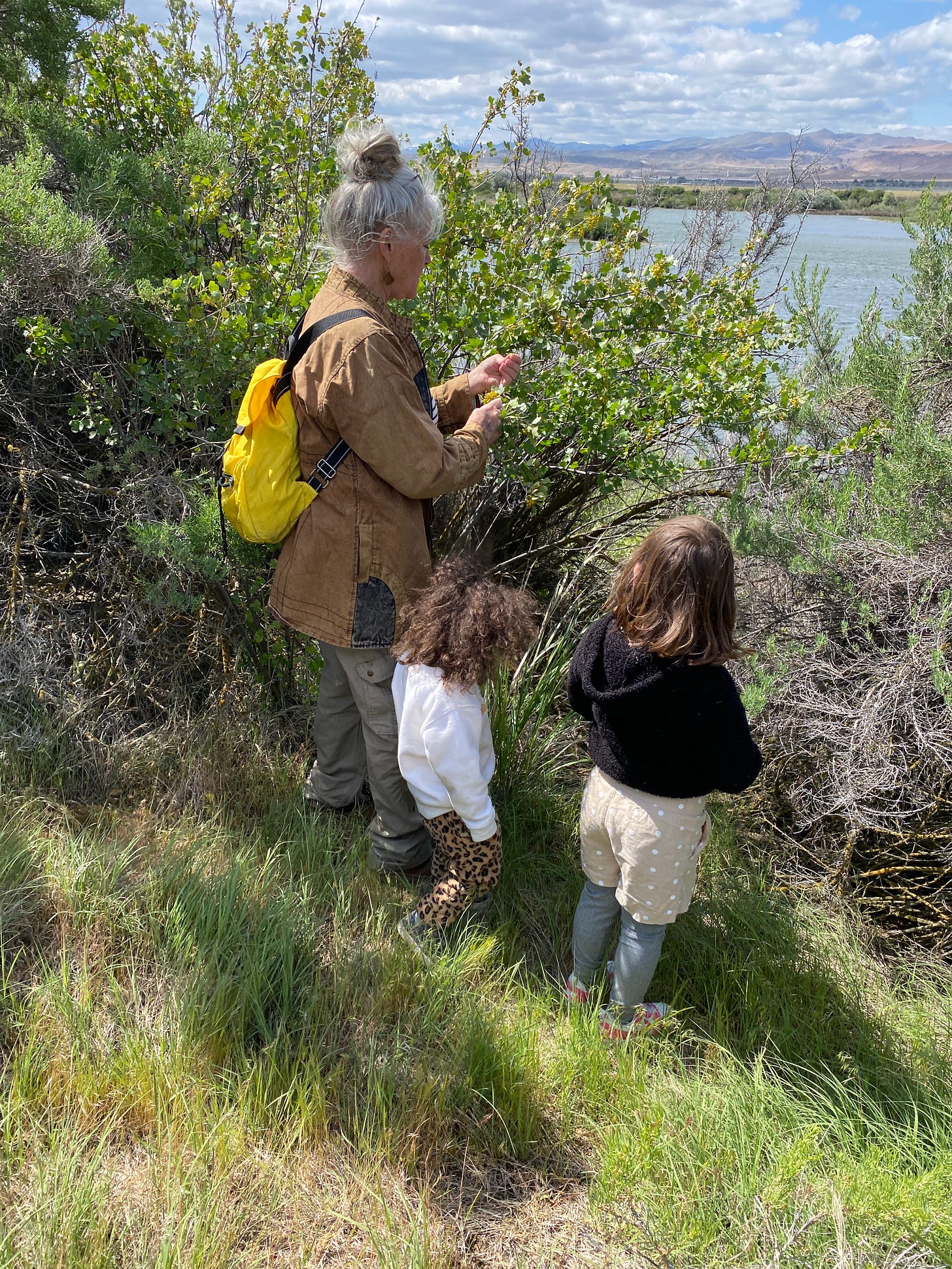

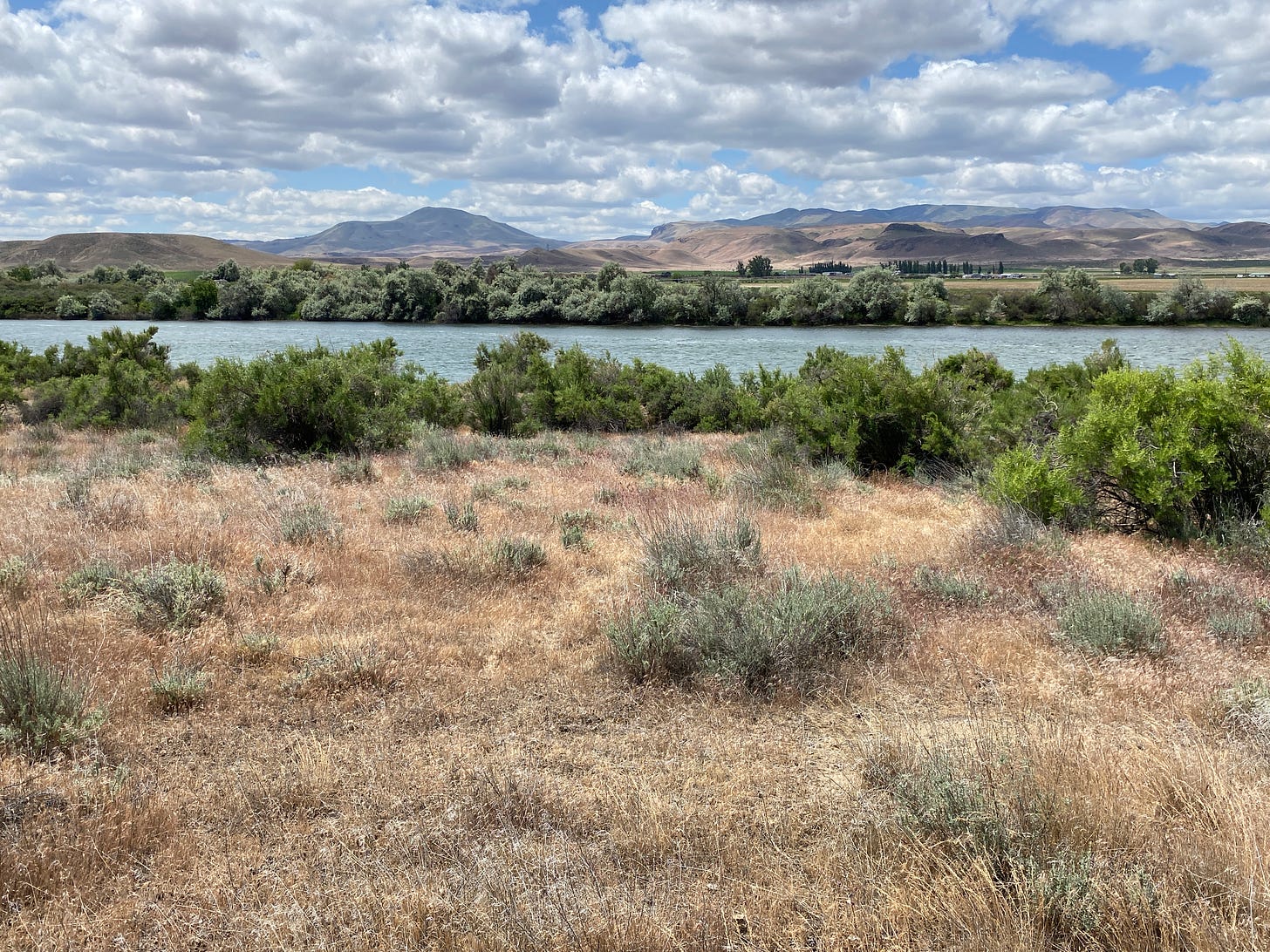
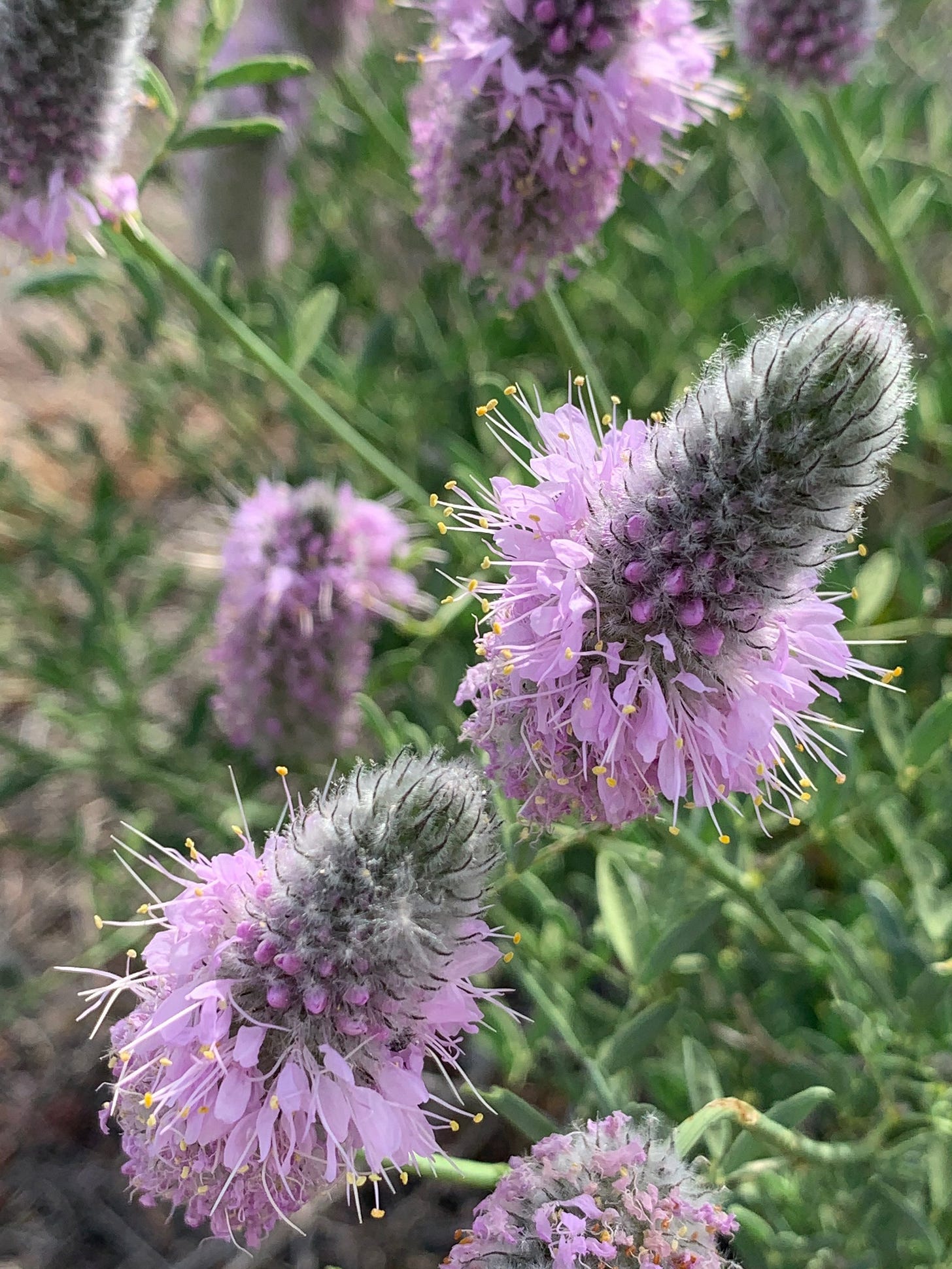
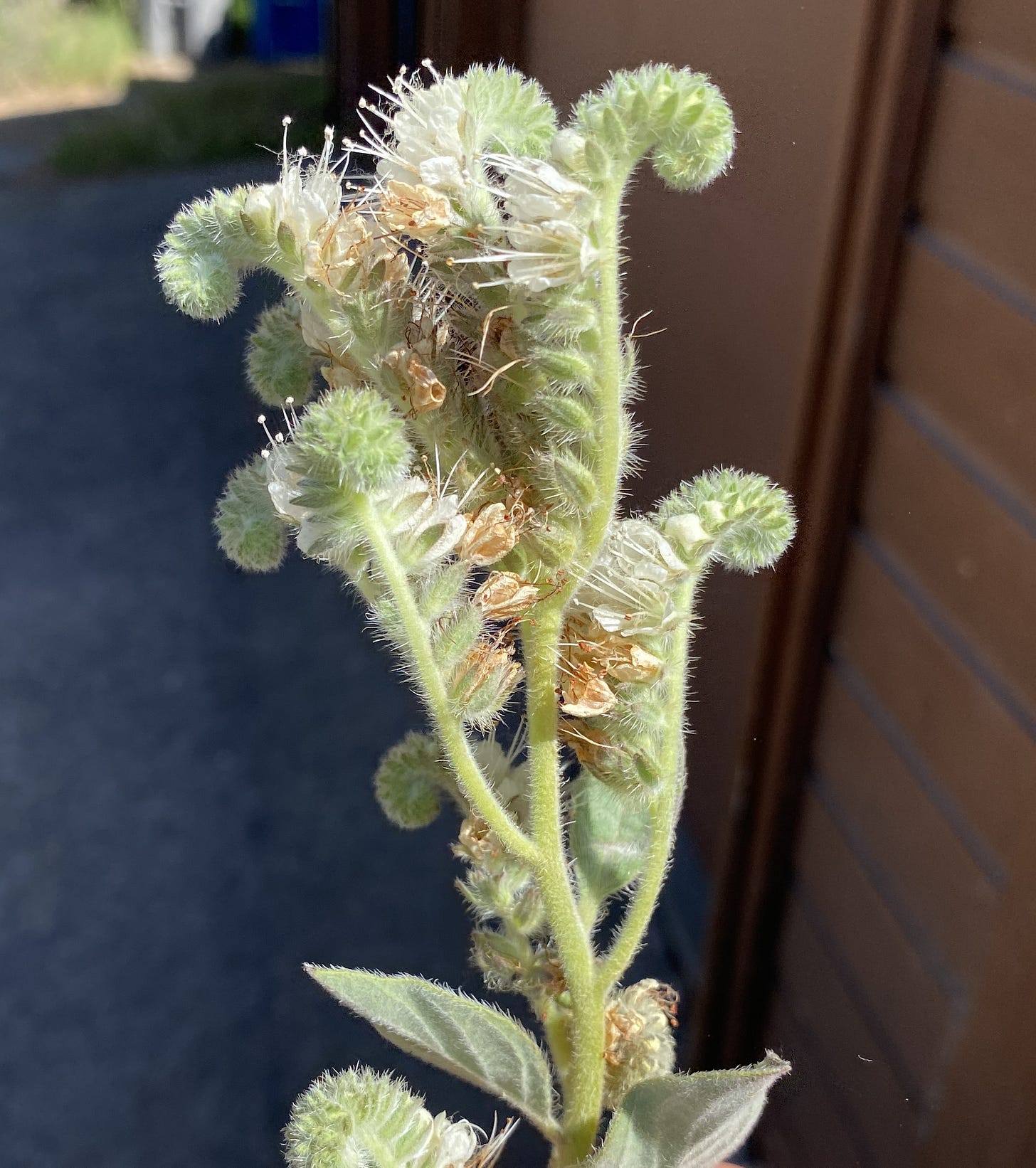
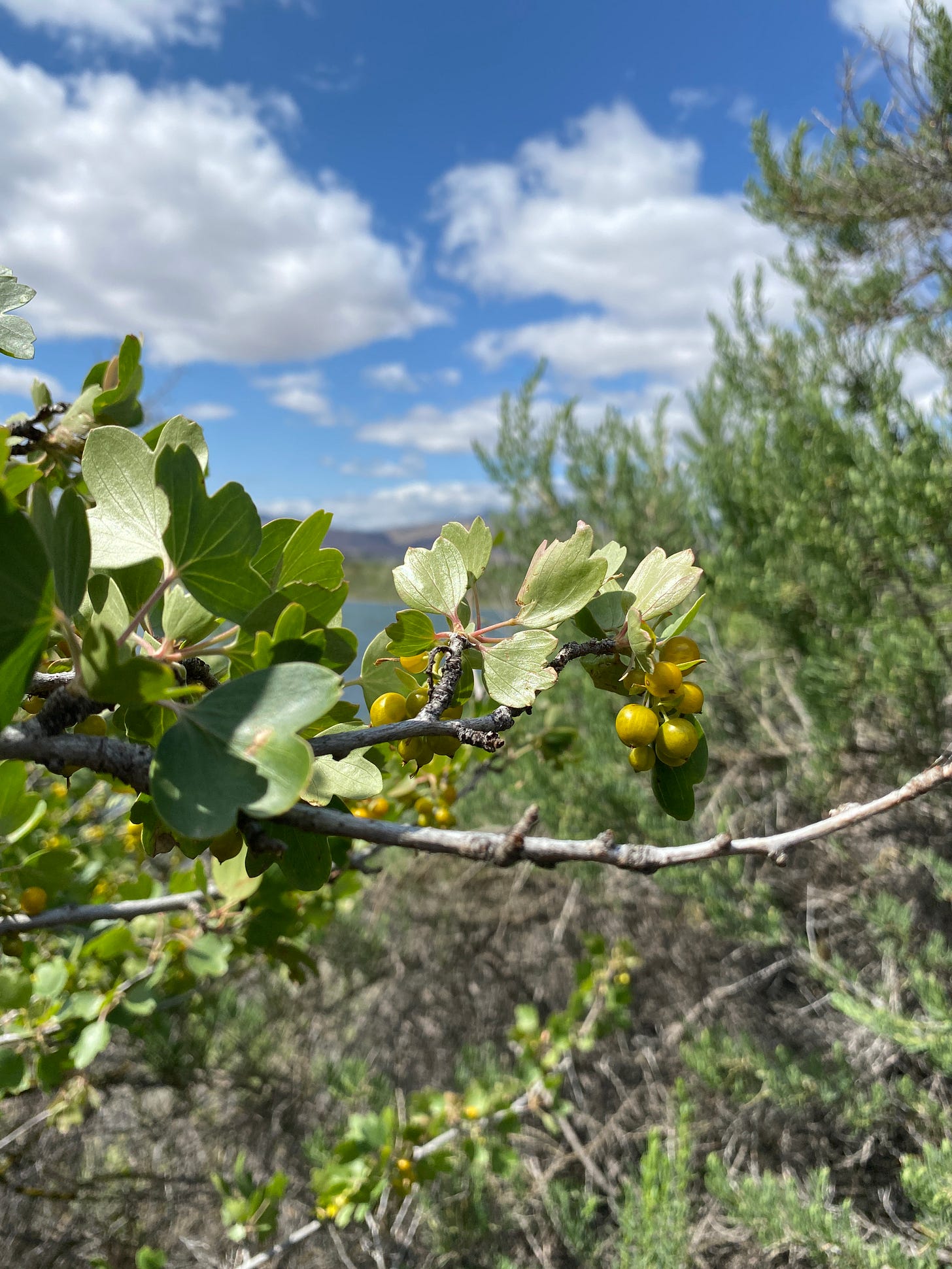
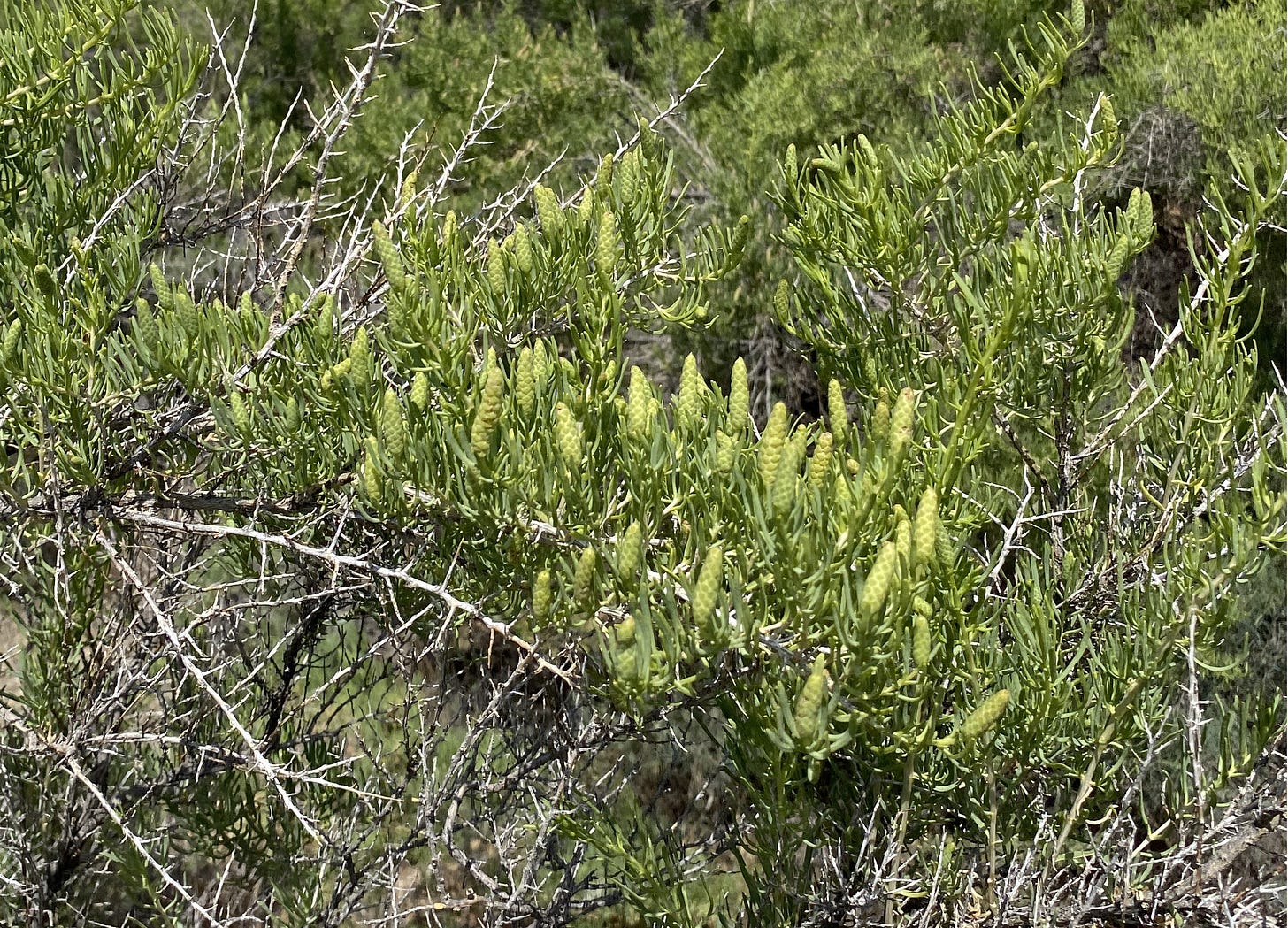
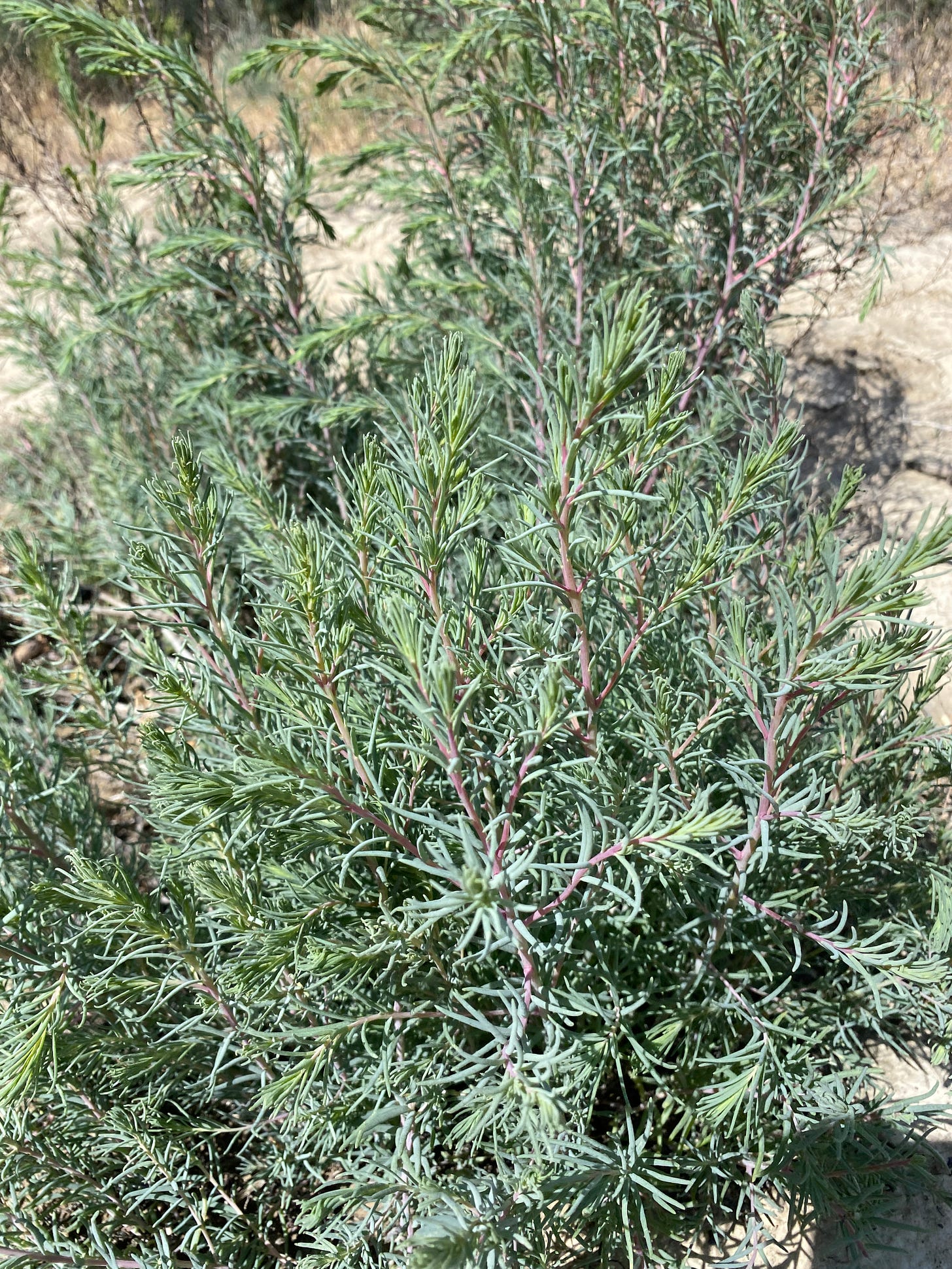

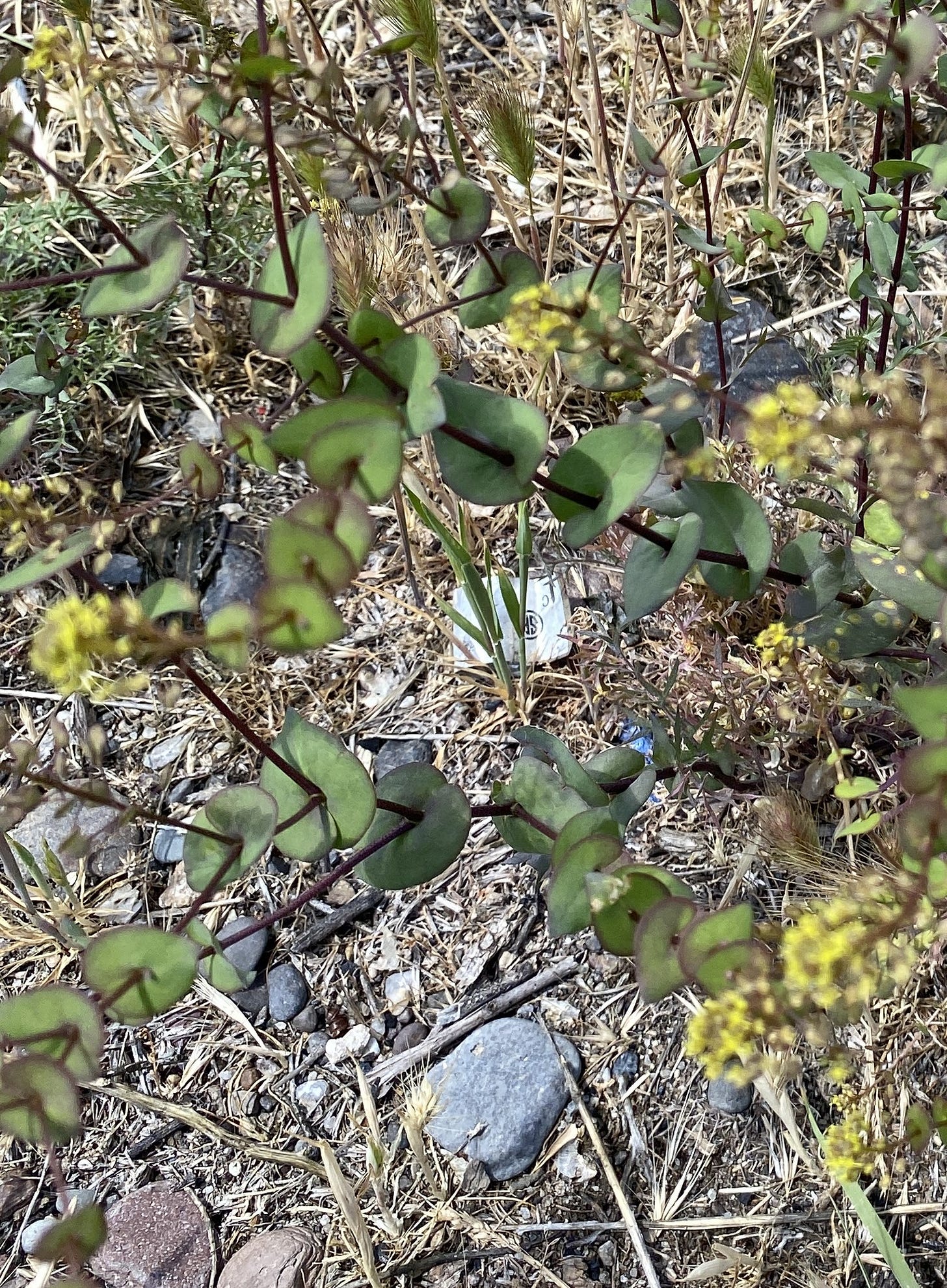
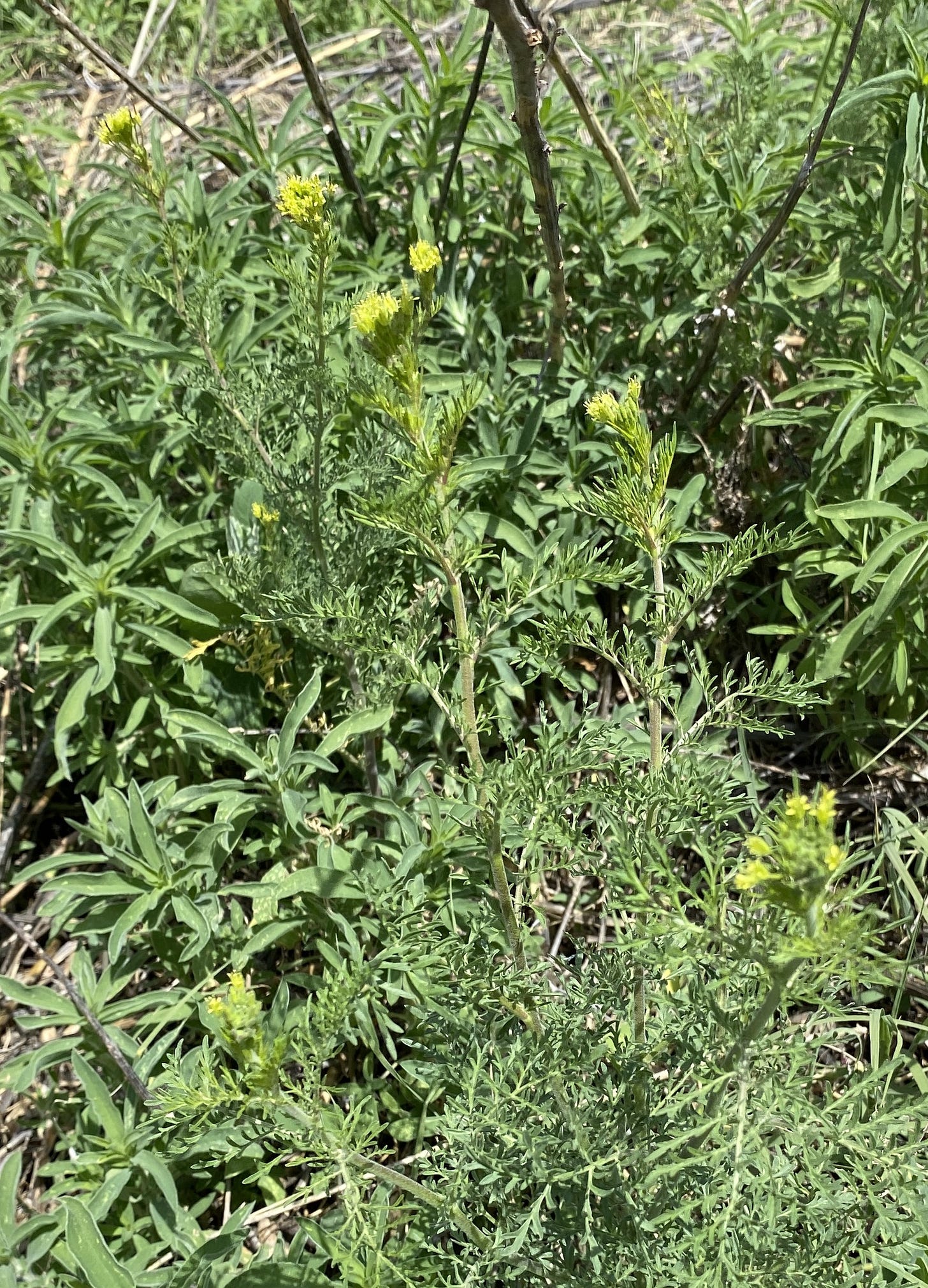

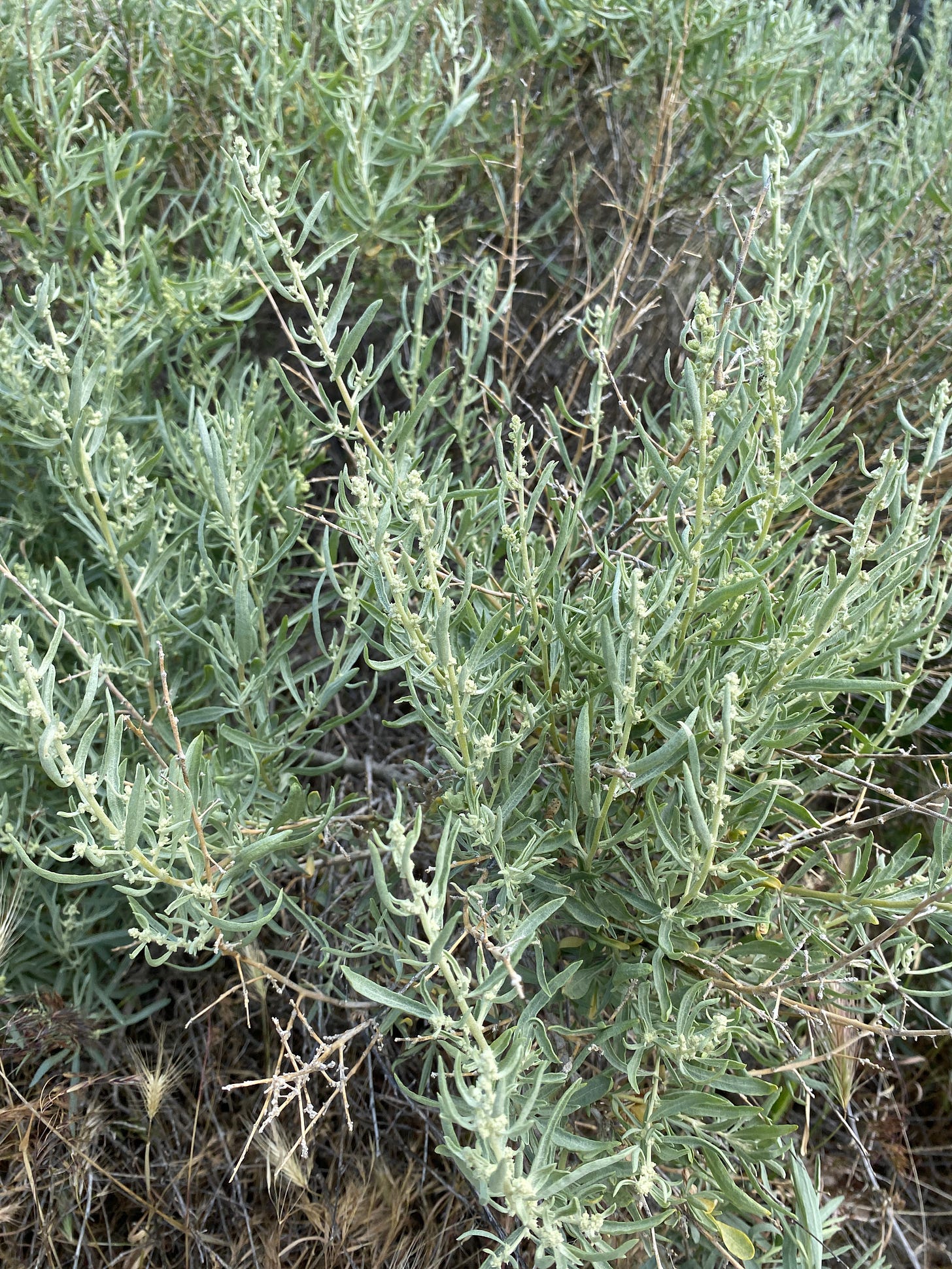
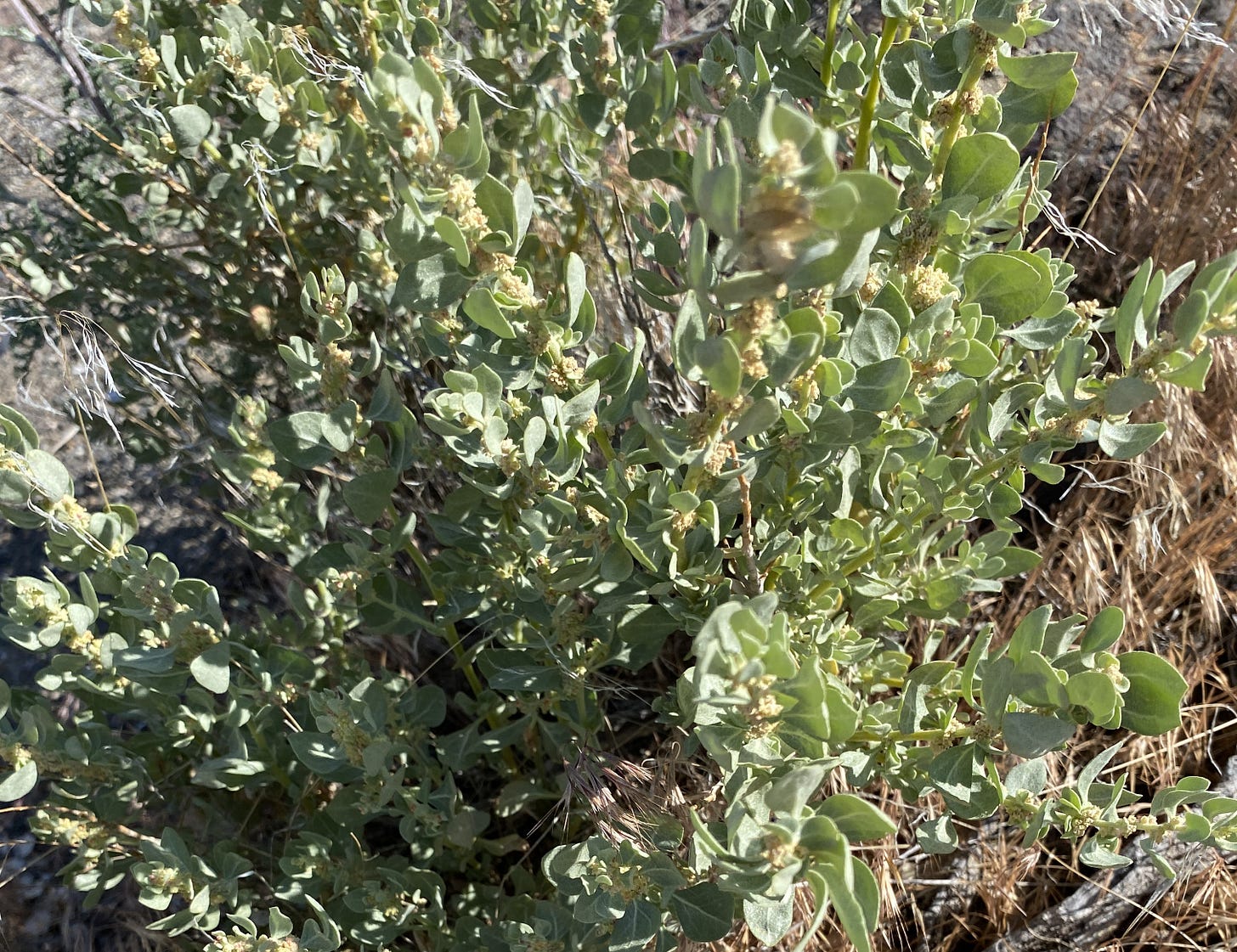
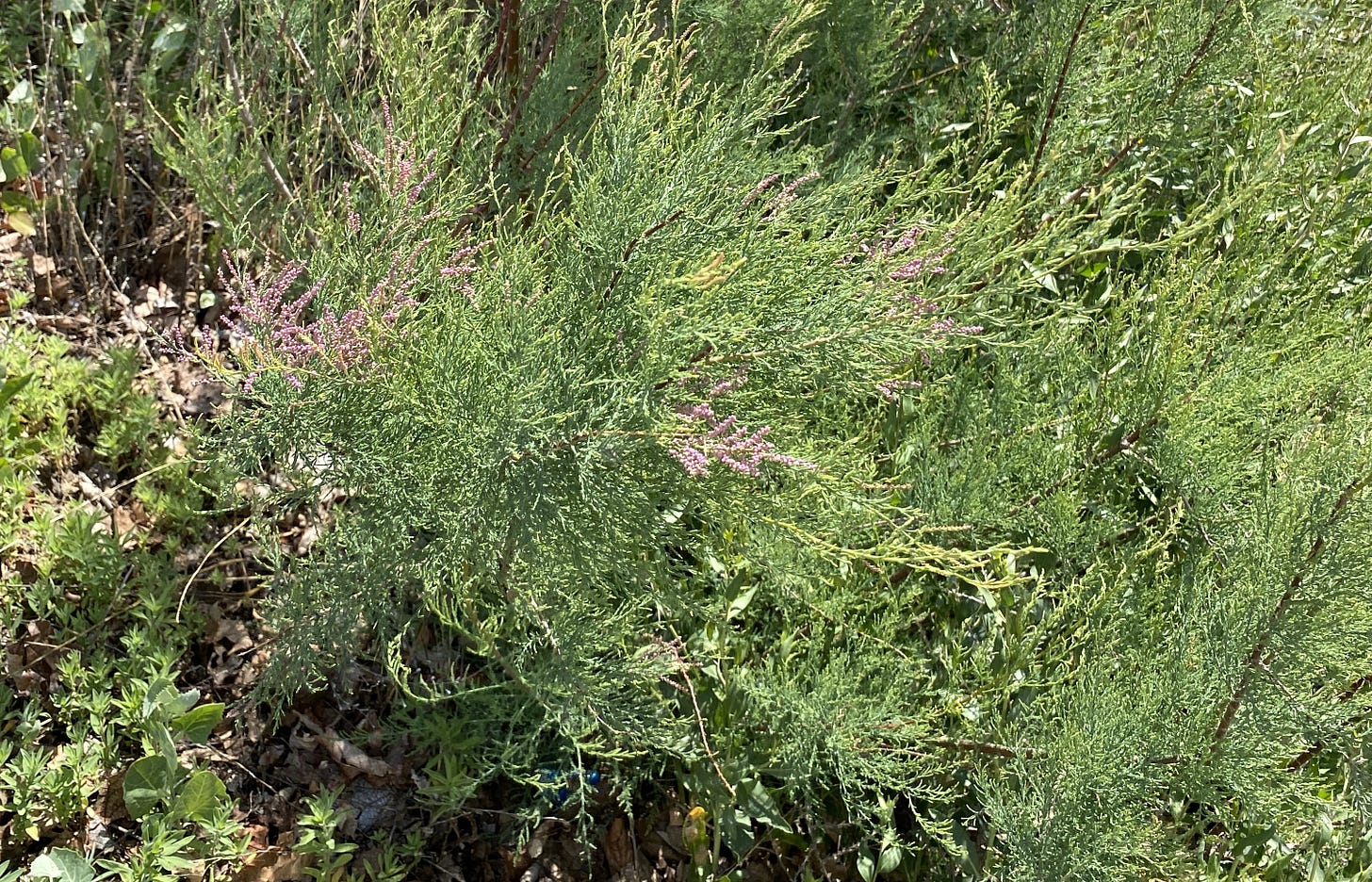
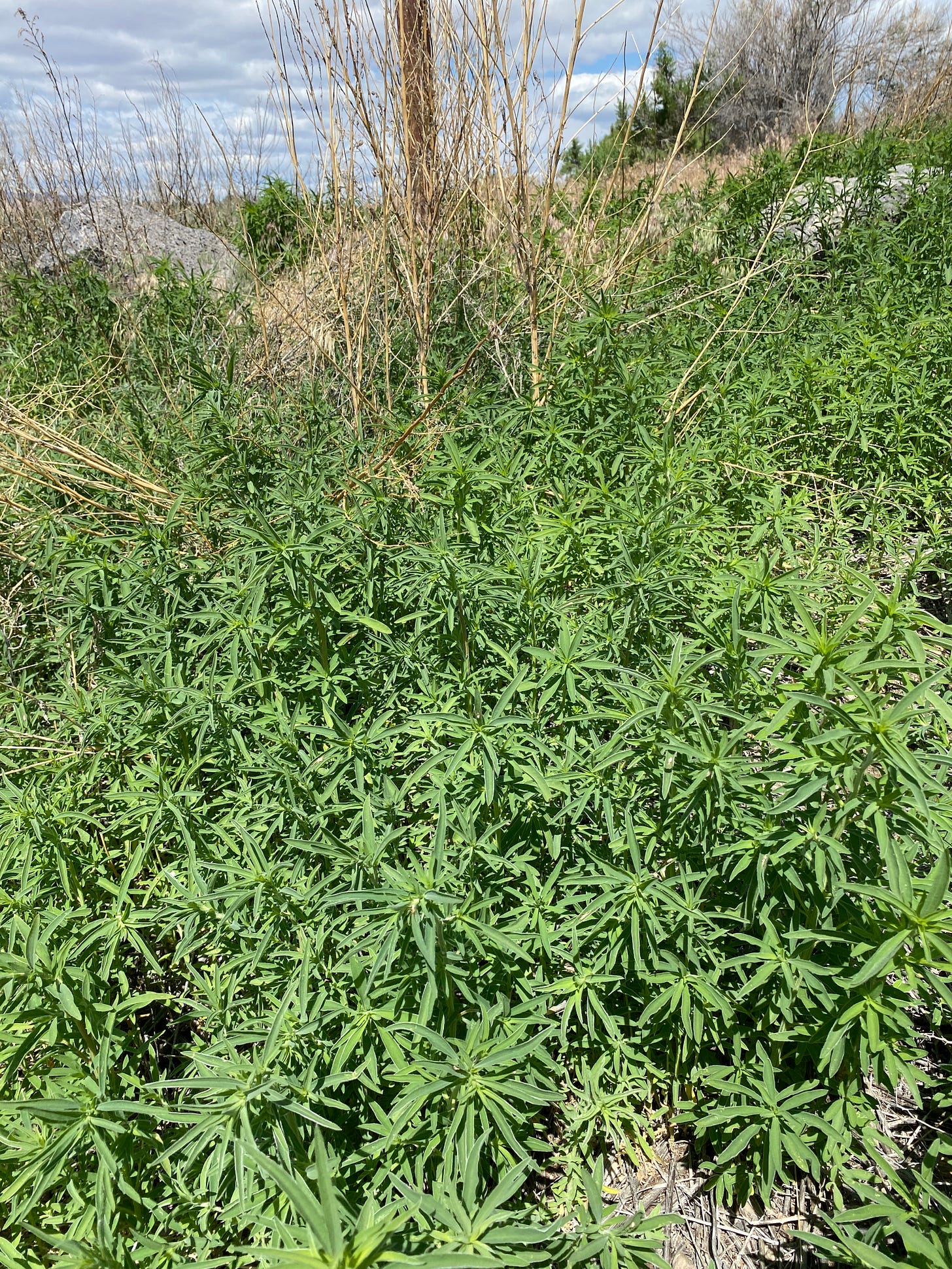
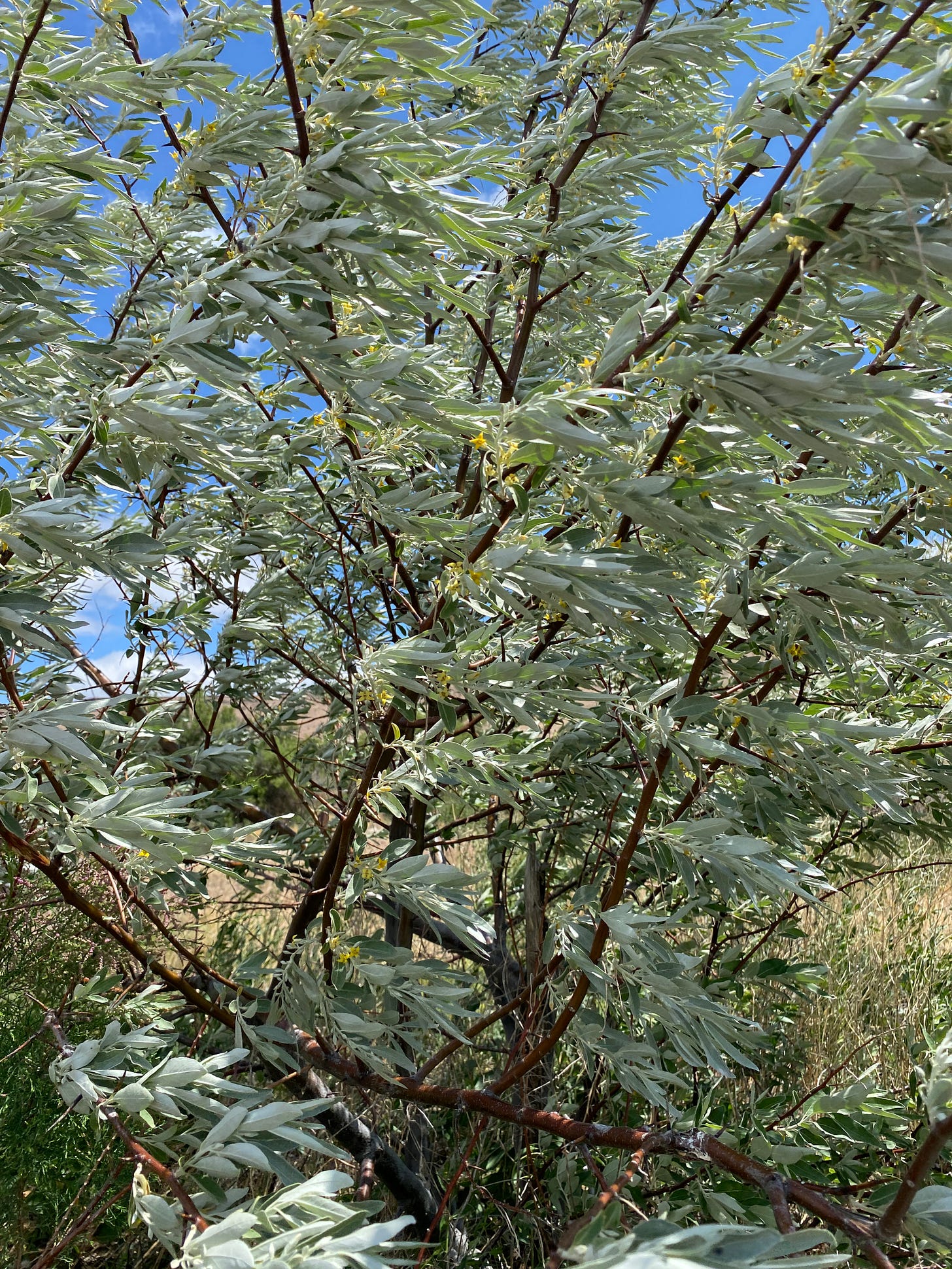
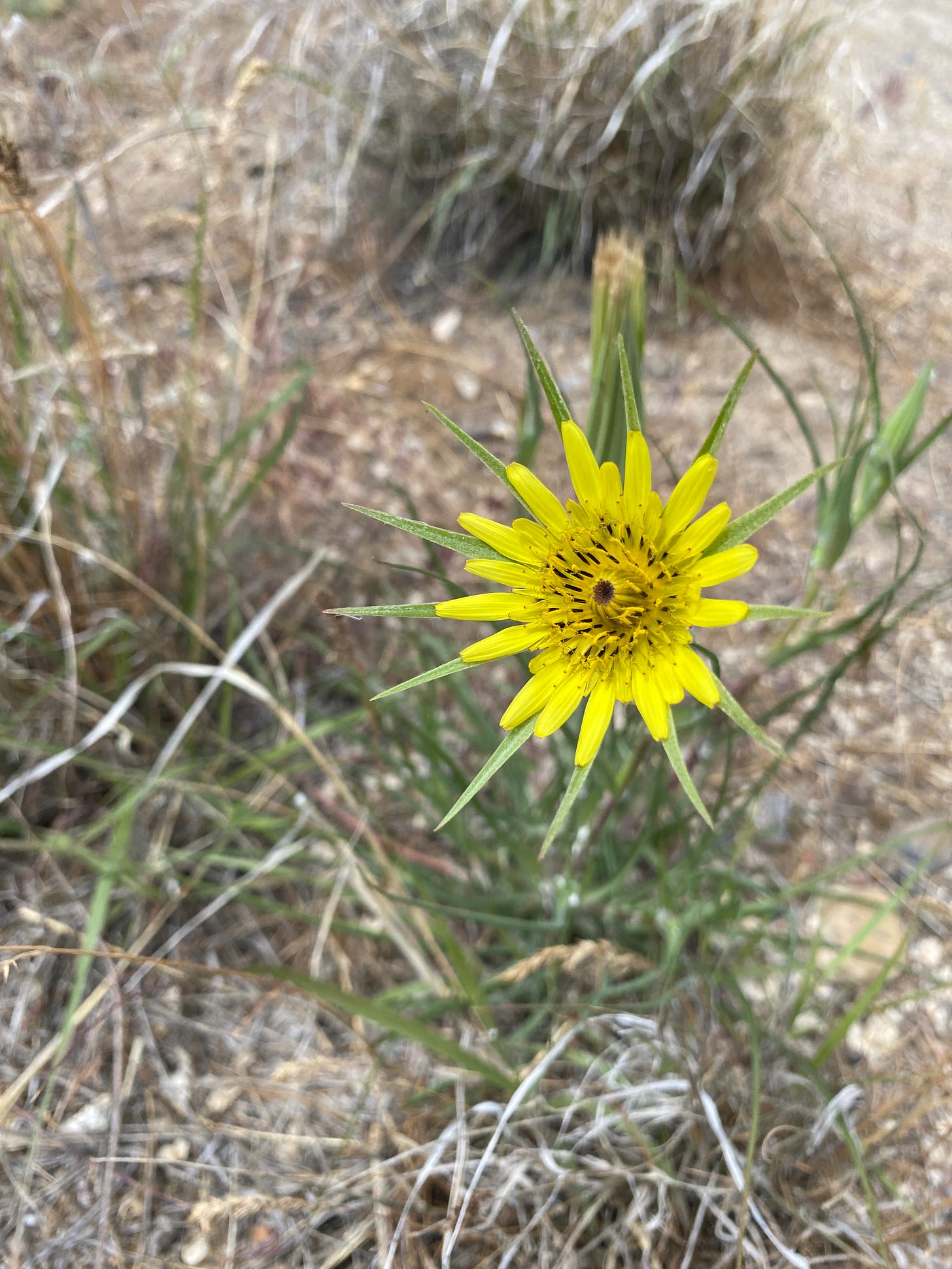
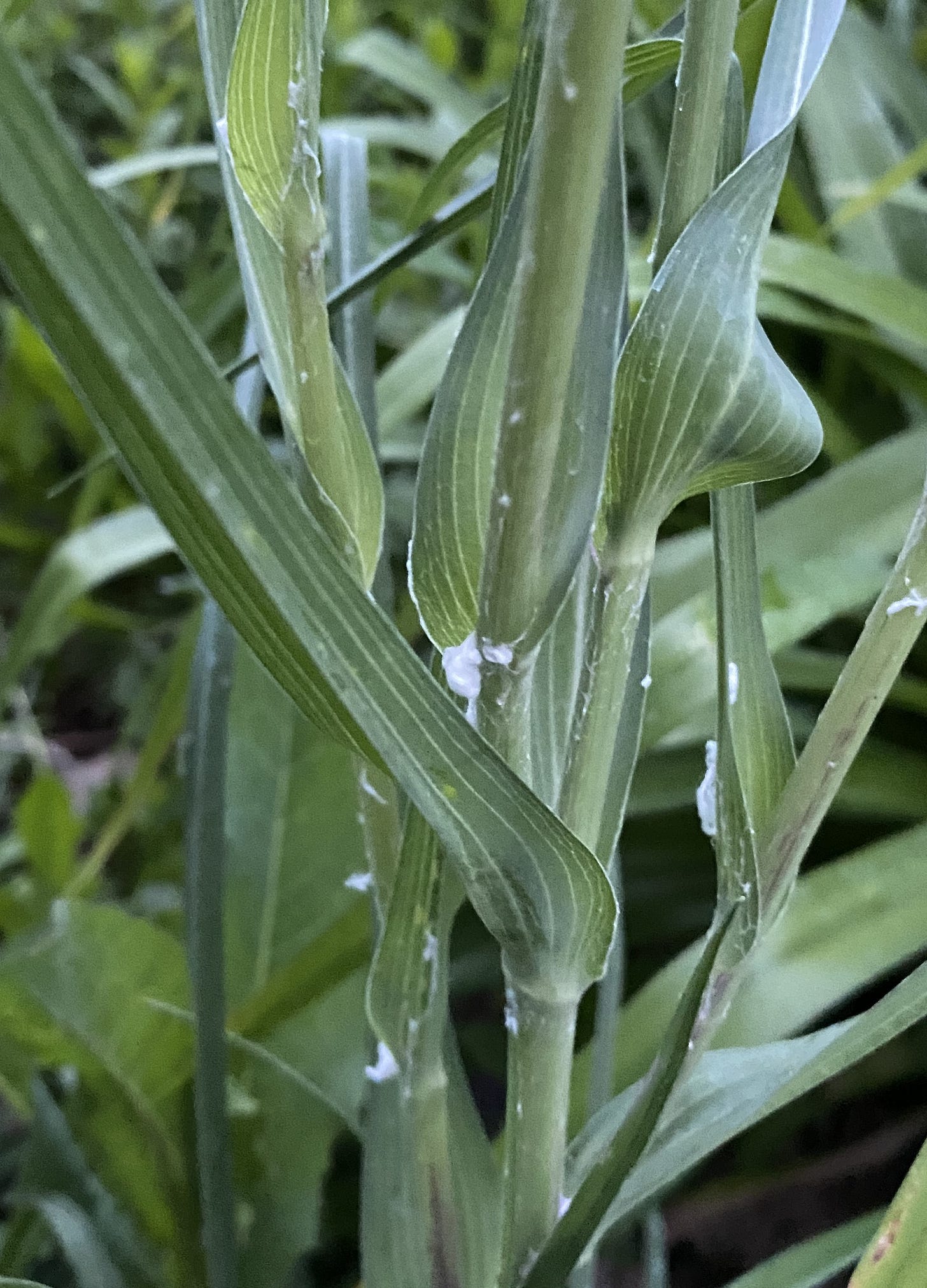
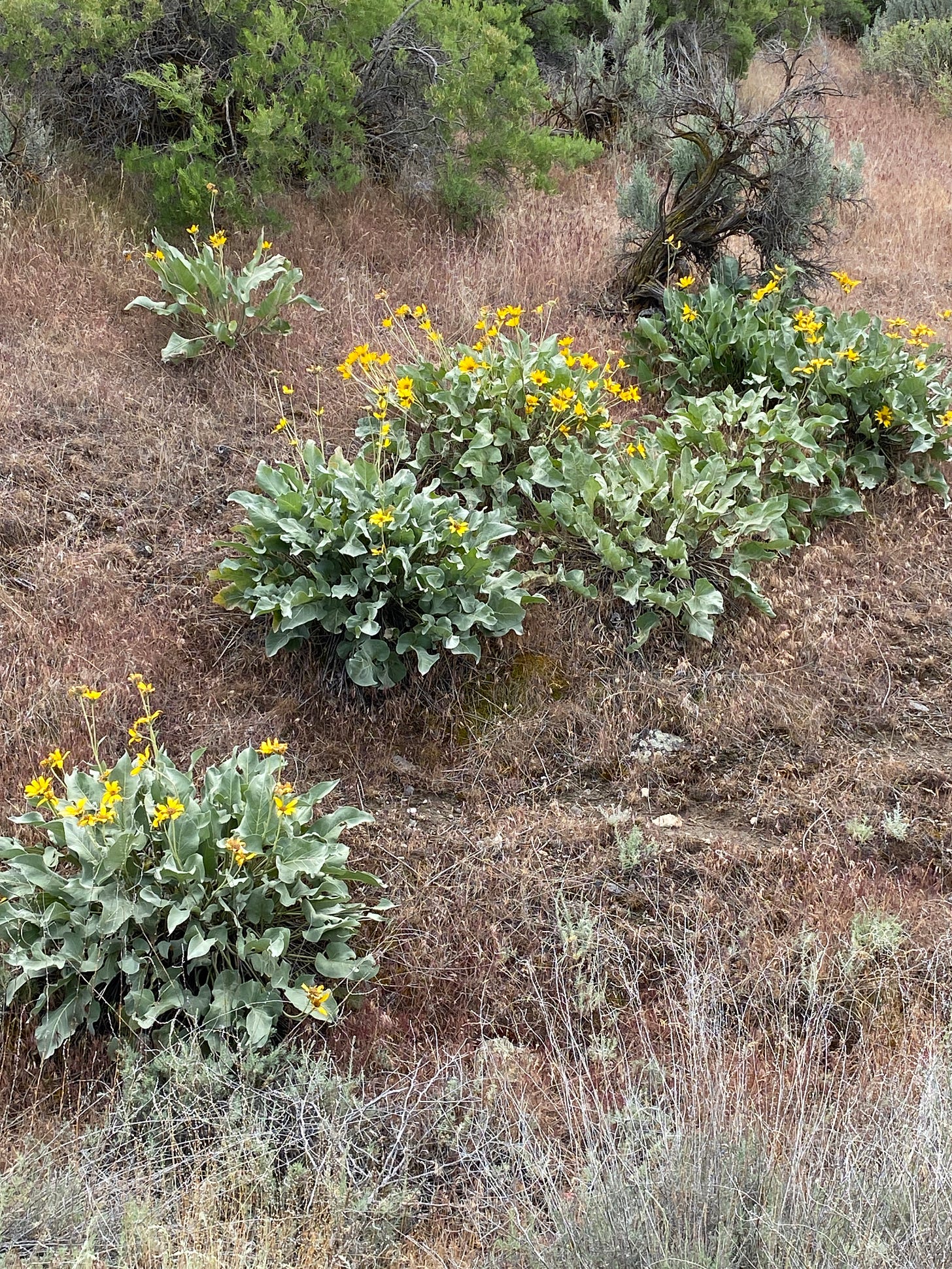
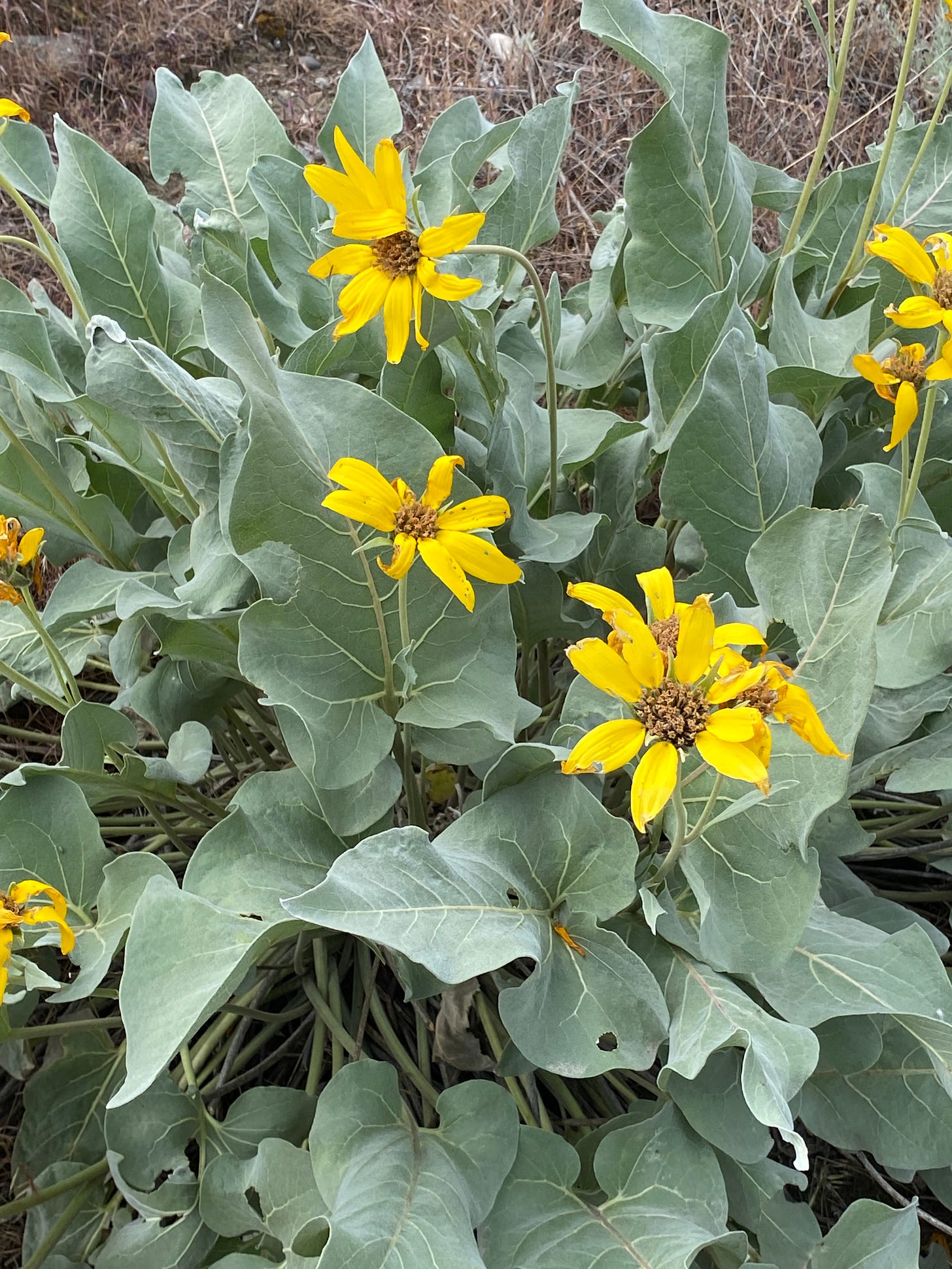

Thanks for sharing these beautiful photos and the interesting insights into tribal uses of these plants! I live in France, and it was fun to see which of these grow here too. Euphorbia eseula can be found in parts of France. Gonna try to learn how to spot it on my next hike.
Nice write up!!